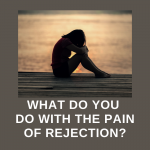(Note: This is not my typical devotional post. However, I felt strongly this message needed to get out. I hope you’ll share it as well with all of those parents unaware of the potential dangers.)
If you are a parent of a teen or pre-teen, most likely you’ve been faced with a choice of whether to allow your child access to social media, the internet and/or online gaming. In some ways, it can seem like an easy, harmless request, but in reality it’s anything but.

Studies have shown that 93% of teens ages 12-17 are online and 73% of them are on a social network (Source: 30 Statistics about Teens and Social Networking). With that many kids online, it is a breeding ground for a variety of issues. So as a parent, how do you know how to navigate all of this to make a wise decision for your child or children?
Frontal Lobe
The first thing to know is that your teen or pre-teen, no matter how smart they may seem, just don’t have the ability to have good judgement yet. And they won’t until they are around 25 years of age. (Source: Understanding the Teen Brain). The frontal lobe is “the part of the brain that controls important cognitive skills in humans, such as emotional expression, problem solving, memory, language, judgment, and sexual behaviors.”
So if teens’ brains aren’t ready for social media, then you can bet that tweens brains are not. Victoria L. Dunckley M.D., states, “I can’t imagine a worse time in a child’s life to have access to social media than middle school. Tweens’ brains are simply too immature to use social media appropriately.” (Why Social Media is Not Smart for Middle School Kids)
5 more reasons why you should take a closer look…
Depression, Anxiety & Low Self Esteem
You’ve probably heard it said that people only post their “highlight reel” on social media. People like to show off the good things and fun times. Seeing all of these highlights can lead to feeling “less than” for adolescents but I would also say for adults. And with an increase of social media comes the temptation of comparison.
“A survey conducted by the Royal Society for Public Health asked 14-24 year olds in the UK how social media platforms impacted their health and wellbeing. The survey results found that Snapchat, Facebook, Twitter and Instagram all led to increased feelings of depression, anxiety, poor body image and loneliness.” (Source: How Using Social Media Affects Teenagers)
“A 2017 study of over half a million 8th through 12th graders found that the number exhibiting high levels of depressive symptoms increased by 33 percent between 2010 and 2015. In the same period, the suicide rate for girls in that age group increased by 65 percent.” (Source: Does Social Media Cause Depression?)
Cyberbullying
When I was a kid, bullies usually ganged up on you at recess or lunch when no teachers were around. They made threats and looked for ways to ridicule, make fun and shame you. Today’s bullies often hide behind a screen. But the threat is even greater. Nearly half of young people (47%) have received intimidating, threatening or nasty messages online.(Source: Enough is Enough Cyber Bullying).
In addition, 29% of teens have posted mean info, embarrassing photos or spread rumors about someone. And 24% have had private or embarrassing info made public without their permission. (Source: 30 Statistics about Teens and Social Networking)
And what does cyberbullying result in? According to Science Daily, “Children and young people under 25 who are victims of cyberbullying are more than twice as likely to self-harm and enact suicidal behavior.” And according to this British study, “Almost half of suicides among young people are related to bullying.”
When we were bullied as kids, we could at least go home and feel safe. Today, the bullying can be 24/7, and that’s not okay.
Stranger Danger
When your kids were little, you most likely gave them the talk about strangers. You know, don’t talk to strangers and certainly never leave with a stranger. Once they get older you assume they are past this stage, but they aren’t. Studies have shown that 55% of teens have given out personal info to someone they don’t know, including photos and physical descriptions.
And even more alarming is that 29% have been stalked or contacted by a stranger or someone they don’t know. (30 Statistics about Teens and Social Networking) Even as an adult, I get messages and friends requests from total strangers. Some of them even go so far as to copy a friend’s photo and create a new account under that friend’s name. Fortunately for me, I have a frontal lobe and know to check first and delete the impersonators and strangers.
Unpredictable Harmful & Inappropriate Content
Have you ever googled something innocent and came across something you did not intend to find? I have. I once googled something about the white house and the site that came up was full on X rated and the home page showed pictures that were not adult appropriate much less kid appropriate. Sadly, you do not even have to be searching for it, to find it.
Unpredictable, harmful content is not even just restricted to the internet, it’s with video content too. How many of us moms have let our little tikes watch kid shows without any fear of something harmful on it? Well not anymore. This mother found video with suicide instructions on YouTube Kids!
With content like that on the internet and video, it’s no surprise that you can find the same harmful, inappropriate, unpredictable content on apps and social media. One popular app amongst pre-teens is Tik Tok (Formerly Musical.ly). At first glance it seems innocent enough and to pre-teens, it’s all about lip syncing and creating fun videos with the apps special features. But what you may not know is there are quite a few reasons to be concerned including X rated content, explicit lyrics and online predators. “…a young girl who posted a video of her lip synching and within hours, she received a message from a man with his own video of him doing inappropriate things to himself while watching her video.” (More on this in the next section).
In addition, these apps also acquire a ton of personal information including location, personal data, behavioral information and more. (Source: Is The TikTok (Formerly Musical.ly) App Safe?)
Pedophiles, Predators and Sex Traffickers
So not only are these predators looking to send inappropriate content to your children, they are also hoping to take it much further. You’ve most likely heard of the pedophiles online posing as someone much younger to friend or start communicating with your kids. Many times, they will use a photo of a younger, more attractive person to gain this access or in some cases many even impersonate someone famous as in this case: Man arrested for ‘sextorting’ girl while posing as Justin Bieber.
We must educate our kids on the dangers of interacting with anyone that they do not know personally and know well. And even then to be aware of fake accounts set up using an easily-downloaded photo of someone, perhaps even someone they know.
There is also the danger of strangers looking to lure victims into online friendship for sex trafficking. According to Sex Trafficking, Internet Safety, “Much like the grooming tactics employed by sexual predators, sex traffickers lure their target into an online relationship, with the ultimate goal of meeting in person. Traffickers use a deliberate process to identify and recruit their victims. It happens in three main phases: scouting, manipulating and trapping. Victims are often showered with love, romance and promises of a better life. Others are lured in with false promises of a job, or given expensive gifts. The end game of the trafficker (or pimp) however, is to force or manipulate their target into prostitution.”
So what can you do?
Here are a few options to consider:
You as the parent ultimately have to weigh all these drawbacks to decide if it’s worth it and if so, at what age. There are several ways to approach these solutions, and you may want to take several approaches to protect and guard your kids.
Education
I believe it all starts with educating ourselves. We don’t and won’t know what dangers lie out there for our children unless we are first informed. A great place to start is this article: “How To Have “The Talk” With Your Kids (On Internet Safety, That Is).
Monitoring
Without that frontal lobe, our kids just don’t know how to navigate this big cyber world. I believe they need our guidance and they likely won’t ask for it. Kids are curious and left unattended many will seek out things they should not seek out. And they know that you may never find out. In fact, 67% of teenagers say they know how to hide what they do online from parents.
The good news is there are apps and tools to monitors your child’s online activity. This article, “4 Apps for Monitoring Kids Online” offers four options. Another one worth checking out is Bark.
Restricting
Social media addiction is a thing. With over 2 billion social media users worldwide, there’s bound to be addiction. You can see some staggering statistics in this article.
“Studies reveal that “hyper-networked” teens — those who spend upwards of three hours daily on social media — are especially vulnerable to experiencing higher anxiety and lower self-esteem. For many families, giving their children access to specific social networks while monitoring the amount of time spent on them is an effective, long-term strategy for keeping kids connected and protected online.” (Source: Is Snapchat Safe for Kids? It’s Complicated)
The article goes on to say, “A writer from the Huffington Post wrote about how she combated her 15-year-old’s addiction to Snapchat after her grades started to slip. The parents decided to force their daughter to delete the app and live without it. According to the writer, after plenty of fighting, begging and pleading to get it back, their daughter eventually learned to live without Snapchat and her grades went back up.”
Contracts & Agreements
Sometimes having discussions is not enough. You may need a written contract to make sure rules are understood and clear along with including consequences if rules are not followed. Here are a few contract ideas if you want to pursue this option:
- Social Media Contract for Kids
- A Social Media Contract for Tweens and Parent
- iPhone Contract from Mom
In Conclusion
When I set out to research this topic to show my pre-teen why we were saying no to social media, I was shocked by some of these statistics. I never set out to write an article, especially not one this long. But I felt a tremendous burden to share this information with other parents. Knowledge is power. And as parents, we need all the knowledge, power, wisdom and guidance we can get to make the best decisions for our children.
So is social media the equivalent of handing our teens a hand gun? I think the evidence in this article makes a strong case that it certainly can be. Hand guns don’t have to necessarily kill someone to cause significant, long term injury and harm. So I believe we should proceed with prayer and caution to make the best decision for our families. For us, for now, the answer is no to social media.






This video is something else I believe you will want to watch. The title “Can flip phones end our social media addiction?” is not what’s most important in my opinion. The responses he gets from teens and how social media has affected them is. Watch if you want to understand more the effects of smart phones and social media on our kids.
https://www.youtube.com/watch?v=uMb0wqTqE_4
Lesley, thanks for posting this! I will share it with others as well. My kids are not middle school age yet, but the statistics and evidence you share confirm my convictions to keep firm guidelines on social media when that time comes, and to teach my children how to self regulate their social media as they approach adulthood. I especially feel convicted to model restriction with phone use myself. The best way we can teach is by example.